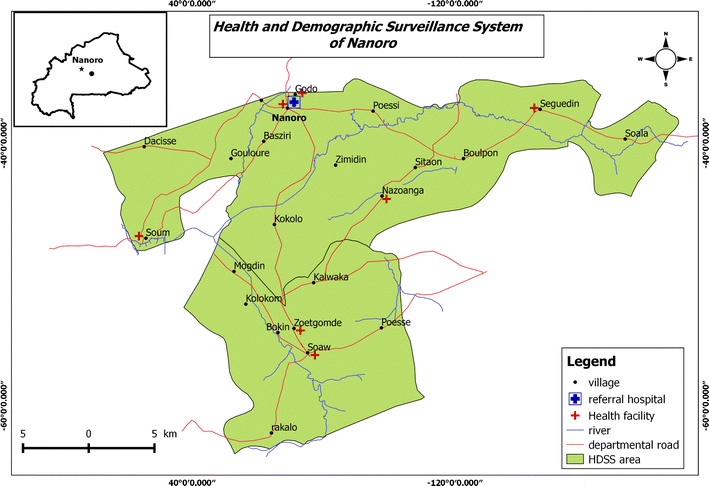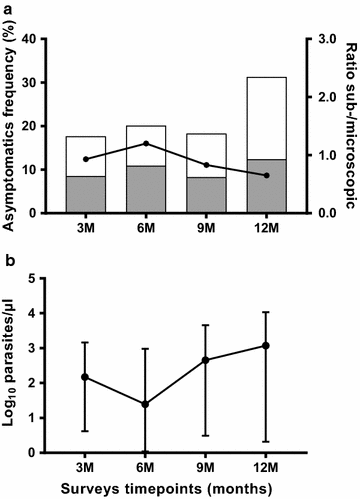Malaria incidence and prevalence during the first year of life in Nanoro, Burkina Faso: a birth-cohort study
- PMID: 29650007
- PMCID: PMC5898041
- DOI: 10.1186/s12936-018-2315-4
Malaria incidence and prevalence during the first year of life in Nanoro, Burkina Faso: a birth-cohort study
Abstract
Background: Infants are thought to be protected against malaria during the first months of life mainly due to passage of maternal antibodies. However, in high transmission settings, malaria in early infancy is not uncommon and susceptibility to the infections varies between individuals. This study aimed to determine malaria morbidity and infection during early childhood in rural Burkina Faso.
Methods: Malariometric indices were determined over 1-year follow-up in a birth cohort of 734 infants living in Nanoro health district. Clinical malaria episodes were determined by passive case detection at peripheral health centres while asymptomatic malaria infections were identified during 4 cross-sectional surveys at 3, 6, 9 and 12 months of age. Plasmodium falciparum infections were detected by rapid diagnostic test and/or light microscopy (LM) and quantitative PCR (qPCR).
Results: In total, 717 clinical episodes were diagnosed by qPCR over 8335.18 person-months at risk. The overall malaria incidence was 1.03 per child-year and increased from 0.27 per child-year at 0-3 months of age to 1.92 per child-year at 9-12 months of age. Some 59% of children experienced at least one clinical episode with a median survival time estimated at 9.9 months, while 20% of infants experienced the first episode before 6 months of age. The majority of the clinical episodes were attributable to microscopic parasitaemia (84.2%), and there was a positive correlation between parasite density and age (Spearman's rho = 0.30; P < 0.0001). Prevalence of asymptomatic infections was similar at 3, 6 and 9 months of age (17.7-20.1%) and nearly 1.6 times higher at 12 months (31.3%). Importantly, gametocyte prevalence among the LM-positive study population was 6.7%, but increased to 10% among asymptomatic infections. In addition, 46% of asymptomatic infections were only detected by qPCR suggesting that infants below 1 year are a potential reservoir for sustaining malaria transmission. Both symptomatic and asymptomatic infections showed marked seasonal distribution with the highest transmission period (July to December) accounting for about 89 and 77% of those infections, respectively.
Conclusions: These findings indicate high and marked age and seasonal-dependency of malaria infections and disease during the first year of life in Nanoro, calling for intensified efforts to control malaria in rural Burkina Faso.
Keywords: Burkina Faso; Incidence; Infants; Malaria; Prevalence.
Figures





References
-
- WHO. World malaria report 2016. Geneva: World Health Organization. https://www.who.int/malaria/publications/world-malaria-report-2016/en/. Accessed 17 May 2017.
-
- Zgambo M, Mbakaya BC, Kalembo FW. Prevalence and factors associated with malaria parasitaemia in children under the age of five years in Malawi: a comparison study of the 2012 and 2014 Malaria Indicator Surveys (MISs) PLoS ONE. 2017;12:e0175537. doi: 10.1371/journal.pone.0175537. - DOI - PMC - PubMed
MeSH terms
Grants and funding
LinkOut - more resources
Full Text Sources
Other Literature Sources

